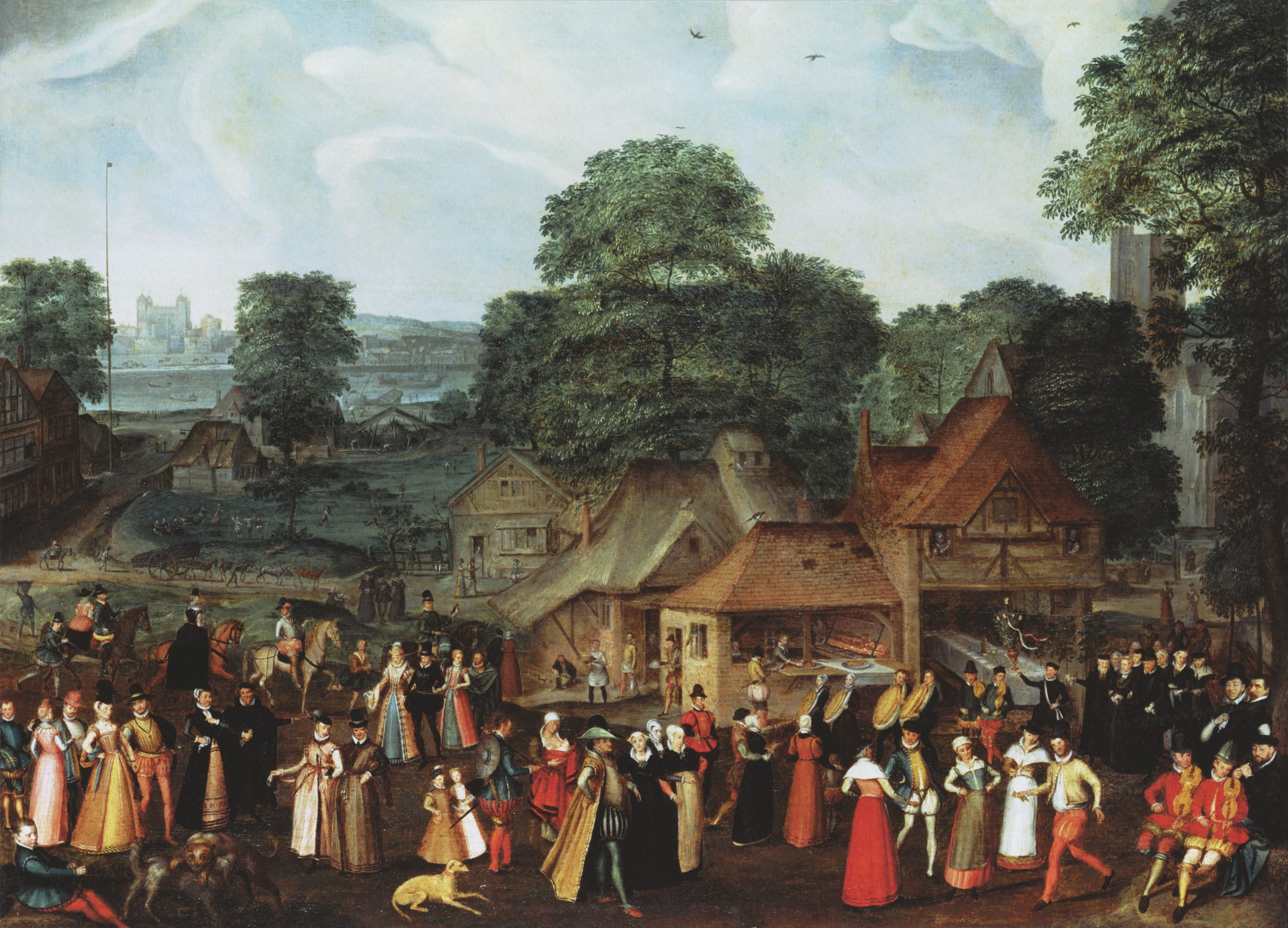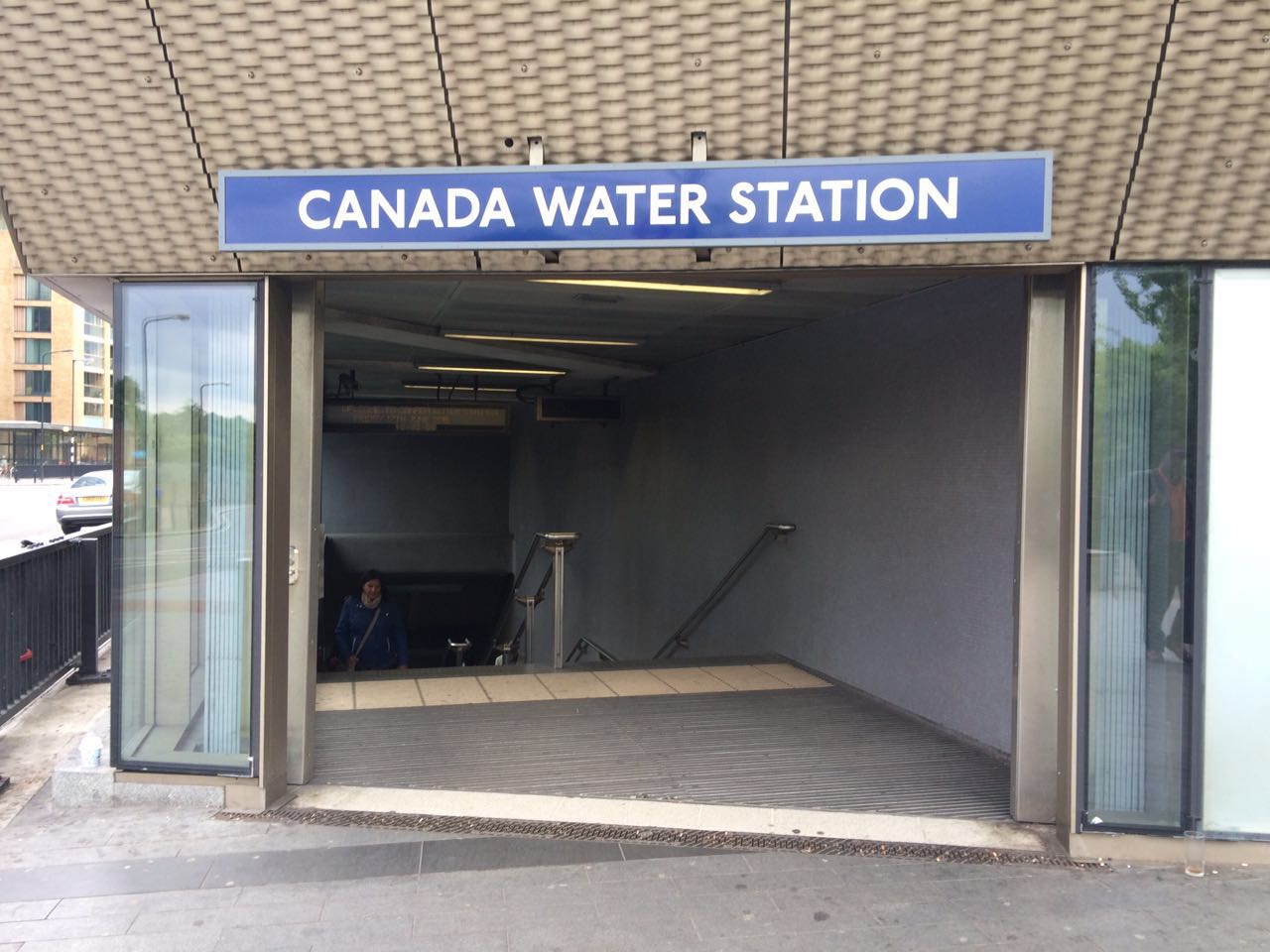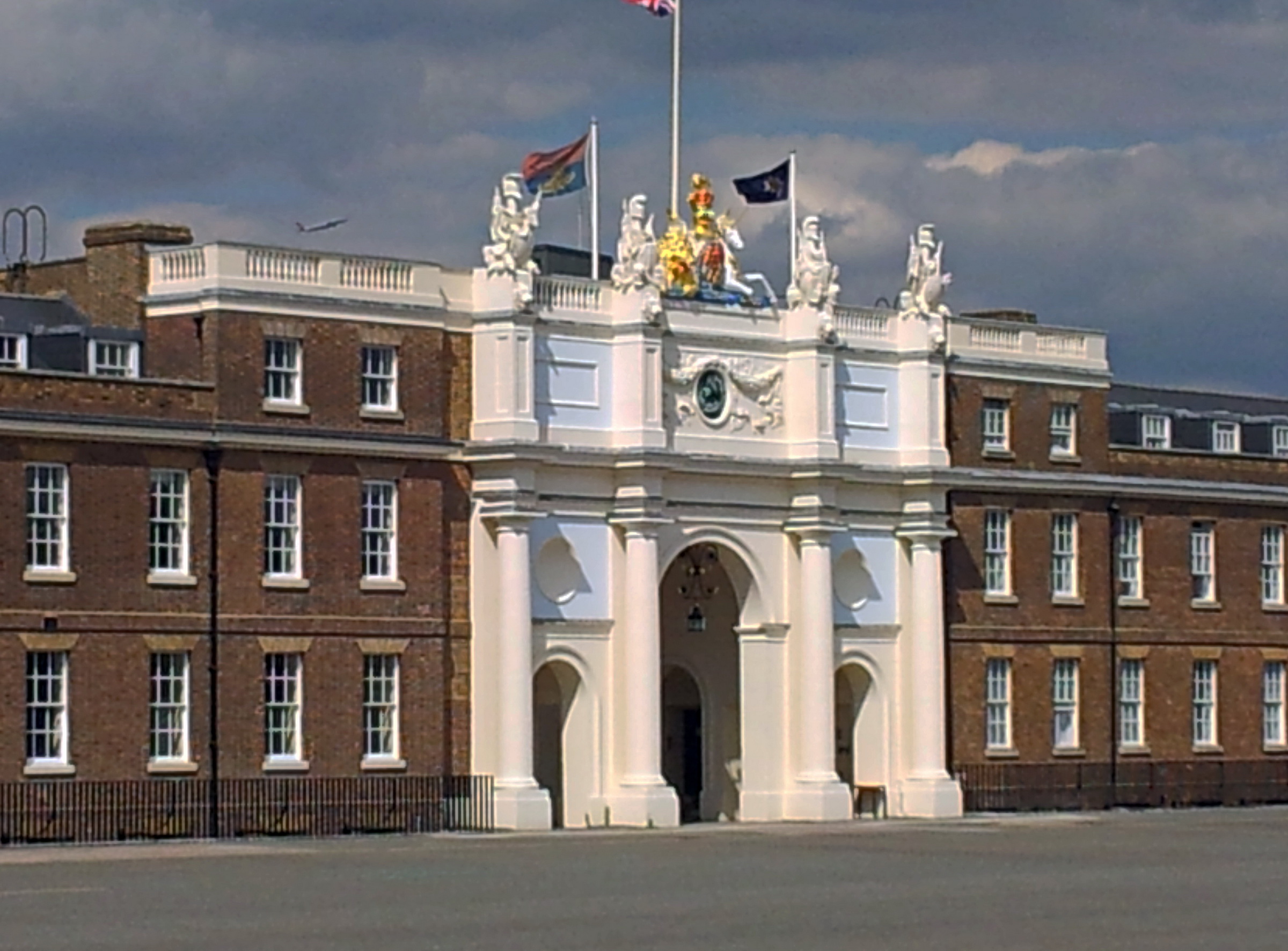|
2017 London Marathon
The 2017 London Marathon was the 37th running of the annual marathon race in London, England, which took place on Sunday, 23 April. Mary Jepkosgei Keitany won the women's race, setting a new women-only marathon world record with a time of 2:17:01, while Daniel Wanjiru came first in the men's race in 2:05:48. David Weir claimed a record breaking seventh win at the London Marathon in the men's wheelchair event. The win broke a tie between Weir and Tanni Gray Thompson for the most wins at the London Marathon. Around 253,930 people applied to enter the race: 53,229 had their applications accepted and 40,048 started the race. These were all record highs for the race. A total of 39,406 runners, 23,912 men and 15,494 women, finished the race. In the under-17 Mini Marathon, the 3-mile able-bodied and wheelchair events were won by Toby Osman (14:25), Erin Wallace (16:09), Jack Agnew (11:39) and Kare Adenegan (12:51). Course The London Marathon is run over a largely flat course ... [...More Info...] [...Related Items...] OR: [Wikipedia] [Google] [Baidu] |
2017 London Marathon
The 2017 London Marathon was the 37th running of the annual marathon race in London, England, which took place on Sunday, 23 April. Mary Jepkosgei Keitany won the women's race, setting a new women-only marathon world record with a time of 2:17:01, while Daniel Wanjiru came first in the men's race in 2:05:48. David Weir claimed a record breaking seventh win at the London Marathon in the men's wheelchair event. The win broke a tie between Weir and Tanni Gray Thompson for the most wins at the London Marathon. Around 253,930 people applied to enter the race: 53,229 had their applications accepted and 40,048 started the race. These were all record highs for the race. A total of 39,406 runners, 23,912 men and 15,494 women, finished the race. In the under-17 Mini Marathon, the 3-mile able-bodied and wheelchair events were won by Toby Osman (14:25), Erin Wallace (16:09), Jack Agnew (11:39) and Kare Adenegan (12:51). Course The London Marathon is run over a largely flat course ... [...More Info...] [...Related Items...] OR: [Wikipedia] [Google] [Baidu] |
River Thames
The River Thames ( ), known alternatively in parts as the River Isis, is a river that flows through southern England including London. At , it is the longest river entirely in England and the second-longest in the United Kingdom, after the River Severn. The river rises at Thames Head in Gloucestershire, and flows into the North Sea near Tilbury, Essex and Gravesend, Kent, via the Thames Estuary. From the west it flows through Oxford (where it is sometimes called the Isis), Reading, Henley-on-Thames and Windsor. The Thames also drains the whole of Greater London. In August 2022, the source of the river moved five miles to beyond Somerford Keynes due to the heatwave in July 2022. The lower reaches of the river are called the Tideway, derived from its long tidal reach up to Teddington Lock. Its tidal section includes most of its London stretch and has a rise and fall of . From Oxford to the Estuary the Thames drops by 55 metres. Running through some of the drier parts ... [...More Info...] [...Related Items...] OR: [Wikipedia] [Google] [Baidu] |
Bermondsey
Bermondsey () is a district in southeast London, part of the London Borough of Southwark, England, southeast of Charing Cross. To the west of Bermondsey lies Southwark, to the east Rotherhithe and Deptford, to the south Walworth and Peckham, and to the north is Wapping across the River Thames. It lies within the historic county boundaries of Surrey. History Toponymy Bermondsey may be understood to mean ''Beornmund''s island; but, while ''Beornmund'' represents an Old English personal name, identifying an individual once associated with the place, the element "-ey" represents Old English ''eg'', for "island", "piece of firm land in a fen", or simply a "place by a stream or river". Thus Bermondsey need not have been an island as such in the Anglo-Saxon period, and is as likely to have been a higher, drier spot in an otherwise marshy area. Though Bermondsey's earliest written appearance is in the Domesday Book of 1086, it also appears in a source which, though surviving onl ... [...More Info...] [...Related Items...] OR: [Wikipedia] [Google] [Baidu] |
London Docklands
London Docklands is the riverfront and former docks in London. It is located in inner east and southeast London, in the boroughs of Southwark, Tower Hamlets, Lewisham, Newham, and Greenwich. The docks were formerly part of the Port of London, at one time the world's largest port. After the docks closed, the area had become derelict and poverty-ridden by the 1980s. The Docklands' regeneration began later that decade; it has been redeveloped principally for commercial and residential use. The name "London Docklands" was used for the first time in a government report on redevelopment plans in 1971 and has since been almost universally adopted. The redevelopment created wealth, but also led to some conflict between the new and old communities in the area. Case Study - Inner City Redevelopment - London's Docklands - Internet Geography Establishment In Roman and medieval times, ships arriving in the River Thames tended to dock at small quays in the present-day City of Lon ... [...More Info...] [...Related Items...] OR: [Wikipedia] [Google] [Baidu] |
Surrey Quays
Surrey Quays is a largely residential area of Rotherhithe in south-east London, occupied until 1970 by the Surrey Commercial Docks. Previously known as Surrey Docks, the area was renamed following the construction of the Surrey Quays shopping centre. The precise boundaries of the area are somewhat amorphous, but it is generally considered to comprise the southern half of the Rotherhithe peninsula from Canada Water to South Dock; electorally, Surrey Docks is the eastern half of the peninsula. The area is served by Surrey Quays railway station. The Docks are called Surrey Docks because until 1889 the borders of Surrey and Kent met in this area. History After the closure of the docks, the area remained derelict for over a decade, with much of the warehousing demolished and over 90% of the docks filled in. The only surviving areas of open water were Greenland Dock, South Dock, part of Canada Dock (renamed Canada Water), remnants of Norway Dock, and a basin renamed Surrey Water. I ... [...More Info...] [...Related Items...] OR: [Wikipedia] [Google] [Baidu] |
Deptford
Deptford is an area on the south bank of the River Thames in southeast London, within the London Borough of Lewisham. It is named after a Ford (crossing), ford of the River Ravensbourne. From the mid 16th century to the late 19th it was home to Deptford Dockyard, the first of the Royal Navy Dockyard, Royal Dockyards. This was a major shipbuilding dock and attracted Peter the Great to come and study shipbuilding. Deptford and the docks are associated with the knighting of Francis Drake, Sir Francis Drake by Elizabeth I, Queen Elizabeth I aboard the ''Golden Hind'', the legend of Walter Raleigh, Sir Walter Raleigh laying down his cape for Elizabeth, James Cook, Captain James Cook's third voyage aboard HMS Resolution (1771), HMS ''Resolution'', and the mysterious apparent murder of Christopher Marlowe in a house along Deptford Strand. Though Deptford began as two small communities, one at the ford, and the other a fishing village on the Thames, Deptford's history and population ... [...More Info...] [...Related Items...] OR: [Wikipedia] [Google] [Baidu] |
Greenwich
Greenwich ( , ,) is a town in south-east London, England, within the ceremonial county of Greater London. It is situated east-southeast of Charing Cross. Greenwich is notable for its maritime history and for giving its name to the Greenwich Meridian (0° longitude) and Greenwich Mean Time. The town became the site of a royal palace, the Palace of Placentia from the 15th century, and was the birthplace of many Tudors, including Henry VIII and Elizabeth I. The palace fell into disrepair during the English Civil War and was demolished to be replaced by the Royal Naval Hospital for Sailors, designed by Sir Christopher Wren and his assistant Nicholas Hawksmoor. These buildings became the Royal Naval College in 1873, and they remained a military education establishment until 1998 when they passed into the hands of the Greenwich Foundation. The historic rooms within these buildings remain open to the public; other buildings are used by University of Greenwich and Trinity Laban C ... [...More Info...] [...Related Items...] OR: [Wikipedia] [Google] [Baidu] |
Drydock
A dry dock (sometimes drydock or dry-dock) is a narrow basin or vessel that can be flooded to allow a load to be floated in, then drained to allow that load to come to rest on a dry platform. Dry docks are used for the construction, maintenance, and repair of ships, boats, and other watercraft. History Greco-Roman world The Greek author Athenaeus of Naucratis (V 204c-d) reports something that may have been a dry dock in Ptolemaic Egypt in the reign of Ptolemy IV Philopator (221-204 BC) on the occasion of the launch of the enormous '' Tessarakonteres'' rowing ship. It has been calculated that a dock for a vessel of such a size might have had a volume of 750,000 gallons of water. In Roman times, a shipyard at Narni, which is still studied, may have served as a dry dock. Medieval China The use of dry docks in China goes at least as far back the 10th century A.D. In 1088, Song Dynasty scientist and statesman Shen Kuo (1031–1095) wrote in his ''Dream Pool Essays'': Renaiss ... [...More Info...] [...Related Items...] OR: [Wikipedia] [Google] [Baidu] |
Cutty Sark
''Cutty Sark'' is a British clipper ship. Built on the River Leven, Dumbarton, Scotland in 1869 for the Jock Willis Shipping Line, she was one of the last tea clippers to be built and one of the fastest, coming at the end of a long period of design development for this type of vessel, which halted as steamships took over their routes. She was named after the apparel (short shirt) of the fictional witch in the Robert Burns poem: Tam o’ Shanter. After the big improvement in the fuel efficiency of steamships in 1866, the opening of the Suez Canal in 1869 gave them a shorter route to China, so ''Cutty Sark'' spent only a few years on the tea trade before turning to the trade in wool from Australia, where she held the record time to Britain for ten years. Continuing improvements in steam technology meant that gradually steamships also came to dominate the longer sailing route to Australia, and the ship was sold to the Portuguese company Ferreira and Co. in 1895 and renamed ... [...More Info...] [...Related Items...] OR: [Wikipedia] [Google] [Baidu] |
Old Royal Naval College
The Old Royal Naval College is the architectural centrepiece of Maritime Greenwich, a World Heritage Site in Greenwich, London, described by the United Nations Educational, Scientific and Cultural Organisation (UNESCO) as being of "outstanding universal value" and reckoned to be the "finest and most dramatically sited architectural and landscape ensemble in the British Isles". The site is managed by the Greenwich Foundation for the Old Royal Naval College, established in 1997 to conserve the buildings and grounds and convert them into a cultural destination. The buildings were originally constructed to serve as the Royal Hospital for Seamen at Greenwich, now generally known as Greenwich Hospital, chartered by King William III and Queen Mary II on 25 October 1694, designed by Christopher Wren, and built between 1696 and 1712. The hospital closed in 1869. Between 1873 and 1998 it was the Royal Naval College, Greenwich. Origins of the site This was originally the site of Be ... [...More Info...] [...Related Items...] OR: [Wikipedia] [Google] [Baidu] |
Royal Artillery Barracks
Royal Artillery Barracks, Woolwich, is a barracks of the British Army which forms part of Woolwich Garrison. The Royal Regiment of Artillery had its headquarters here from 1776 until 2007, when it was moved to Larkhill Garrison. History In 1716 two permanent field companies of Artillery (each of a hundred men) were formed by royal Warrant and placed under the command of the Master-General of the Ordnance. They were initially quartered in the Warren, about half a mile from the current barracks site. By 1771 the Royal Regiment of Artillery numbered over 2,400, over a third of whom were usually quartered in Woolwich. Having outgrown its barracks in the Warren, the regiment looked to establish itself in new quarters elsewhere in Woolwich. 18th-century establishment Work on the new barracks began in 1774 on a site overlooking Woolwich Common. As originally built (1774-6) the barracks frontage was only half the present length, being the eastern half of the current south elevatio ... [...More Info...] [...Related Items...] OR: [Wikipedia] [Google] [Baidu] |
Woolwich
Woolwich () is a district in southeast London, England, within the Royal Borough of Greenwich. The district's location on the River Thames led to its status as an important naval, military and industrial area; a role that was maintained throughout the 16th to 20th centuries. After several decades of economic hardship and social deprivation, the area now has several large-scale urban renewal projects. Geography Woolwich is situated from Charing Cross. It has a long frontage to the south bank of the Thames river. From the riverside it rises up quickly along the northern slopes of Shooter's Hill towards the common, at and the ancient London–Dover Road, at . The ancient parish of Woolwich, more or less the present-day wards Woolwich Riverside and Woolwich Common, comprises . This included North Woolwich, which is now part of the London Borough of Newham. The ancient parishes of Plumstead and Eltham became part of the civil parish of Woolwich in 1930. Parts of the war ... [...More Info...] [...Related Items...] OR: [Wikipedia] [Google] [Baidu] |








_-_dry_dock_Pearl_Harbor_(1).jpg)
_-_SLV_H91.250-164.jpg)


